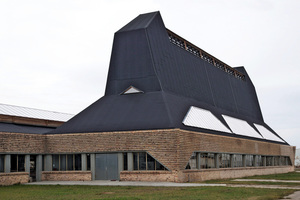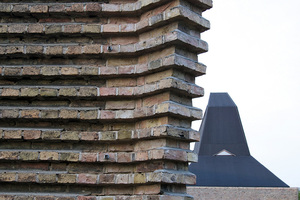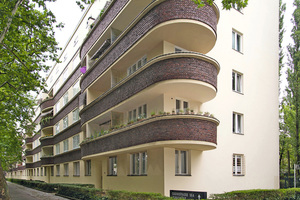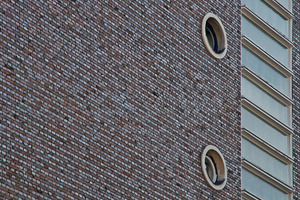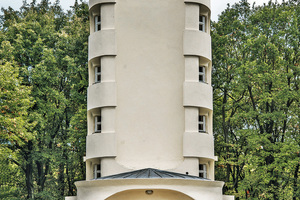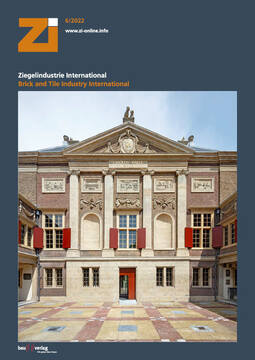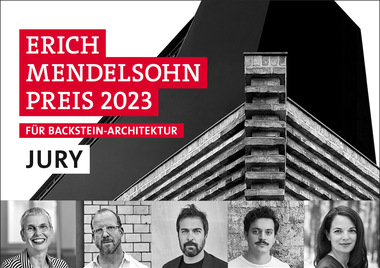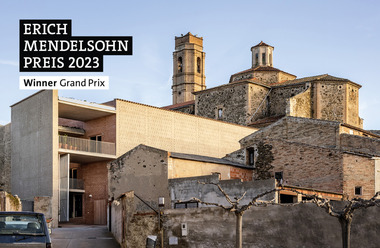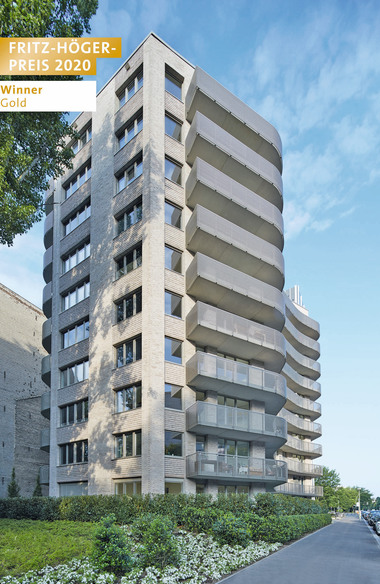The great, quiet visionary
Erich Mendelsohn was one of the most important representatives of modernism in Germany and is still considered one of the most innovative architects of his time worldwide. The Building with Bricks Initiative pays tribute to Mendelsohn as a pioneer of modern architecture with a special step: its international architecture prize, which is awarded every three years, will in future bear the name Erich Mendelsohn Prize for Brick Architecture.
“With the choice of name, we are emphasising the innovative and international claim of our prize,” says Ernst Buchow, chairman of the initiative, explaining the naming. “Erich Mendelsohn stands in the ranks of the great building artists who succeeded in overcoming and transforming design and construction conventions in building.” He said that his openness to technologies and materials, his formal language and his progressive ideas on urban planning had shaped architecture worldwide and continue to do so today. By choosing Erich Mendelsohn as its namesake, the renowned architecture prize sets an example for forward-looking building that finds aesthetically and technically sustainable answers to the challenges of our time.
Even Einstein appreciated Mendelsohn
Only one year younger than Mies van der Rohe and half a year older than Le Corbusier, Erich Mendelsohn (1887-1953) is no longer as well-known today as the two stars among the European architects of modernism. Yet his Einstein Tower made him famous overnight at the beginning of the 1920s: the observatory in Potsdam, with its novel formal language, is one of the icons of Neues Bauen. It was Albert Einstein, who gave the building its name, who first called the freely curved wall surfaces “organic”.
Brick as a Formative Element
Another example of his joy in experimenting with materials is the hat factory in Luckenwalde, a pioneer of industrial buildings in the sense of corporate architecture. The expressive roof, reminiscent of a hat, crowns a brick façade that is deliberately broken through with glass surfaces. Here, for the first time, the architect’s special quality in dealing with brick becomes apparent: Mendelsohn uses the building material as a concise design element that seems to wrap the building volumes in a filigree skin of horizontal lines. Mendelsohn’s influential Berlin architectural practice had a significant impact on Neues Bauen and inspired architects worldwide. Although Mendelsohn was not committed to a particular building material, some of his most important works, especially from his Berlin period of before 1933, used brick to create the dynamic metropolitan architecture typical of Mendelsohn.
Innovative use of material and form
His early work in Germany includes, for example, the remodelling of the Mosse publishing house, with its elegant sweeping bands of windows running around the corner. His famous department store designs for Stuttgart, Breslau or Chemnitz further develop the theme of the rounded building corner to curved façades. The organic curves became his recognisable feature and still characterise Berlin’s cityscape today, such as the brick-clad Woga complex on Kurfürstendamm. “With the Woga complex, he emphasised the horizontal with the material. He layered each row of shiny trusses over a row of duller runners, so that in certain light a striped structure appears. Mendelsohn’s use of brick was innovative,” is how Carsten Krohn, author of the latest, comprehensive Mendelsohn monograph “Erich Mendelsohn - Buildings and Projects”, sums it up.
Growing interest of posterity
After the National Socialists came to power, a turning point followed: as a Jew, Mendelsohn was forced to emigrate via London to Israel and finally to the USA. In the meantime, his later work up to his death in 1953 has come back into focus.
The designs from this period in particular make it clear what Mendelsohn’s work stands for above all: never standing still in the pursuit of innovative architecture, responding flexibly to the demands of the environment and always finding surprising answers. For Ernst Buchow, the name Erich Mendelsohn is therefore “exactly the sign we want to set for the future with our prize for brick architecture”.
Background:
Since 2007, the Brick Architecture Award has been honouring projects that use the potential of the traditional building material to create contemporary as well as timeless buildings. Entries for the prize, which is awarded every three years, recently came from over 30 countries. Among the prize winners are renowned architectural firms such as David Chipperfield Architects, Barozzi Veiga and Witherford Watson Mann. After an intensive examination of Fritz Höger’s Nazi past, the Building with Brick Initiative decided to give the former Fritz Höger Prize a new name that would give lasting expression to the international and progressive character of the competition. The deciding factor was a new, specially commissioned study by the Hamburg historian Prof. Thomas Großbölting.
The study “Fritz Höger - a politically professional biography” and further information on the renaming can be found at: www.backstein-architektur.de/presse

